A shocking thing happened in Vienna in 1976. The Reichsbrücke, a chain bridge handed over in 1937, collapsed at dawn on 1 August 1976. This tragedy and its lessons also changed the system of inspecting bridges in Hungary, and in the late 1970s, a planned renovation program for the bridges in Budapest was adopted. The renovation of the Chain Bridge in this program took place in 1987, of course, a few years later than originally planned.
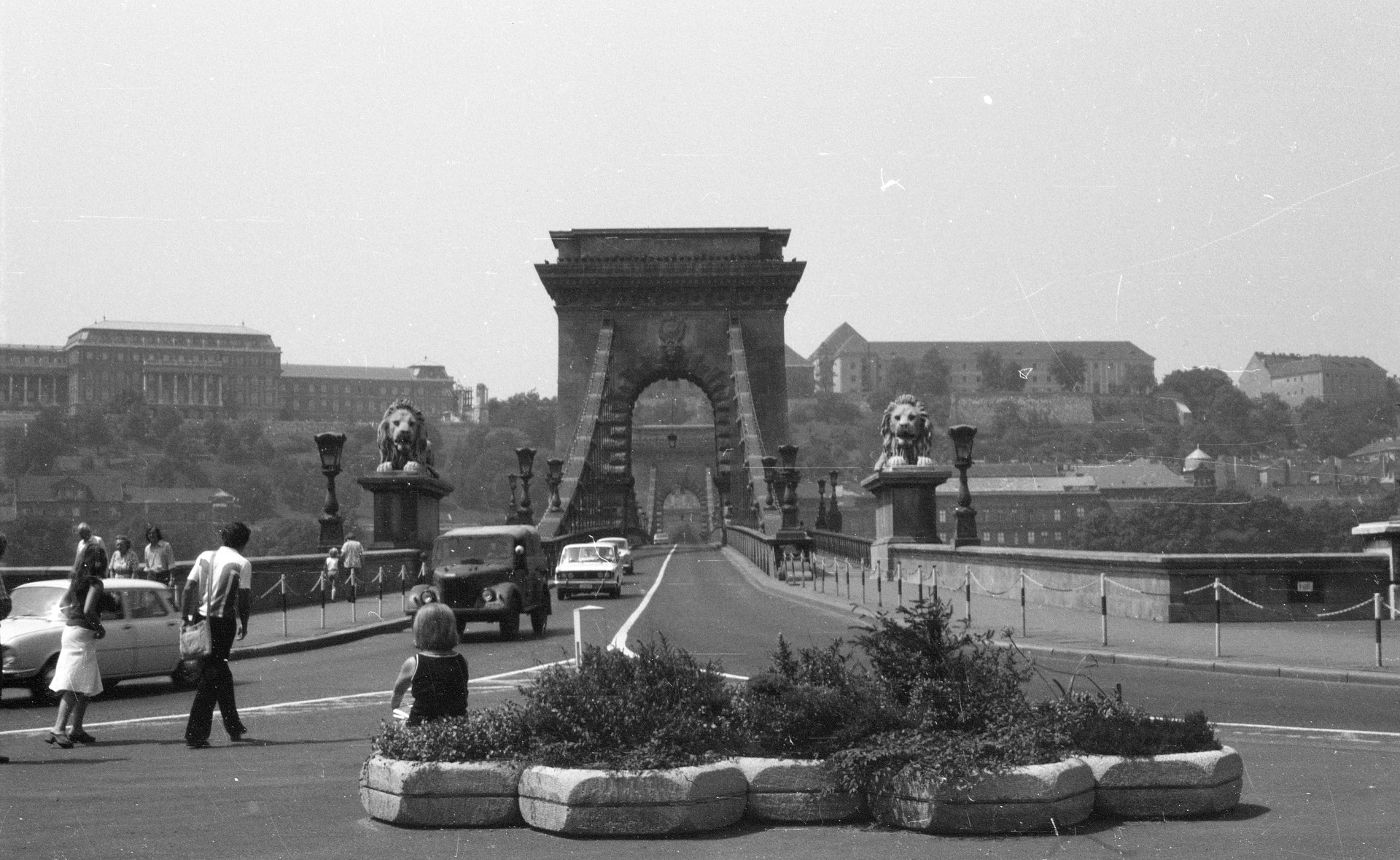
The Chain Bridge in 1984 from today's Széchenyi István (Roosevelt) Square (Photo: Fortepan/No.: 136034)
Renovation began as early as the end of 1986, but work that restricted car traffic did not begin until 1 March 1987. From then on, only buses could run on one lane on the bridge, not only BKV but also Volán vehicles.
Take a look at what needed to be improved on the Chain Bridge then. The list of work to be done was compiled in 1985–1986, and Uvaterv experts found the following defects on the bridge. The surface protection of the steel structure was unsatisfactory, especially in the chain channel where corrosion started. Tests have shown that the chains have lost 1/10 of their diameter in some places. The reinforced concrete slab of the pavement was found to be soaked, the chloride ion content was high, the pavement was fragmented, and the steel inserts were corroded. The asphalt on the roadway was cracked, and the reinforced concrete track slab underneath was also soaked. The detrimental effect of road salt was also felt on the bridge: the salty snow flowing through the dilatations damaged the underlying metal structure.
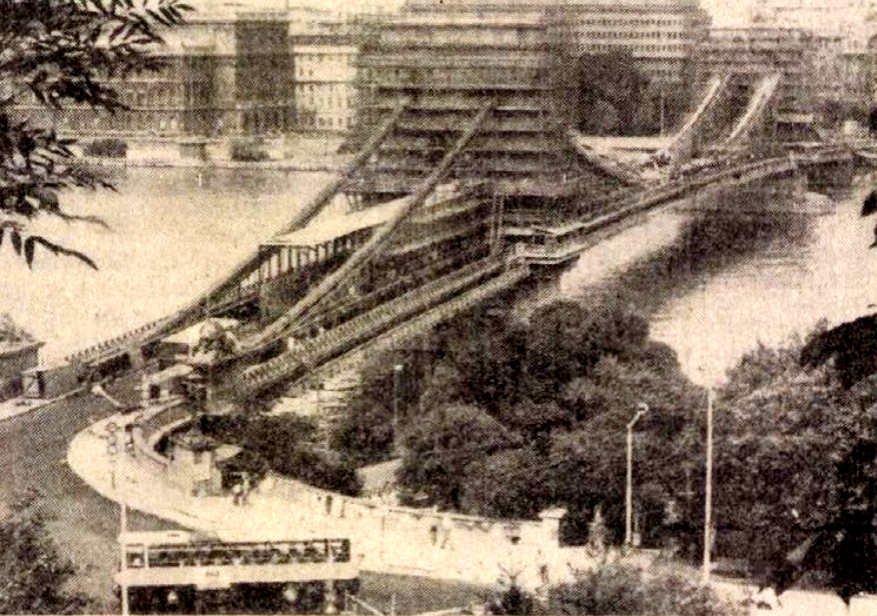
The scaffolded Chain Bridge in 1987 (Source: Népszabadság, 6 July 1987)
The service rooms of the bridgeheads also got soaked, water containing chloride ions leaked into the anchor deck in Pest. On the bridge, the very thin decorative plates of the edging under the railings were completely corroded, and much of the top ornaments on the railings were broken, and many breaks were also found between the railings, and the railing deviated from its vertical plane in some places.
At the top of the Chain Bridge pylons, the tinning was ruined, the stone pavements were dirty, and the stone preservative became ineffective. The cables for decorative and street lighting and the broken stairs at the bridgeheads were dangerous, and there were many abandoned utility lines on the bridge.
So the number of errors was not just a few. The lighting and painting on the bridge were also ruined. This is strange to today's eye because the bridge was renovated barely 13 years earlier when it was extensively painted and renovated, and in 1973 the Chain Bridge was repainted with an expensive Western paint system.
During the works 35 years ago, the bridge was de-rusted, in some places, the rusty parts were replaced (mostly in the crossbeams) and the stone pavements and lighting were repaired. Many other structural works were carried out, for example, many of the suspension spindles had to be replaced, but the expansion joints of the reinforced concrete track slab and pavement were also remodelled and the railing repaired. An attempt was made to prevent further soaking through, the reinforced concrete track slab with a special insulating layer.
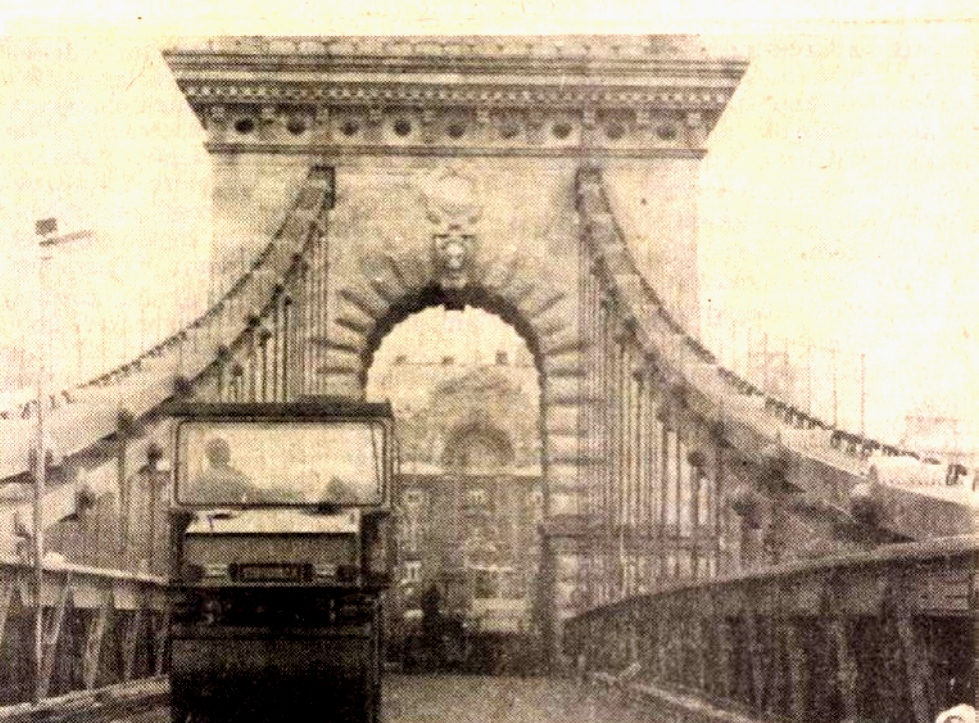
The renovated bridge before the handover, in October 1987 (Source: Népszabadság, 22 October 1987)
In fact, a much more comprehensive renovation was planned at the time, but due to lack of money, only the most necessary work was done.
During the renovation, they tried to maintain public transport, but this was not possible all the way through, first for a weekend in July and then completely blocking the bridge from traffic for a longer period from August.
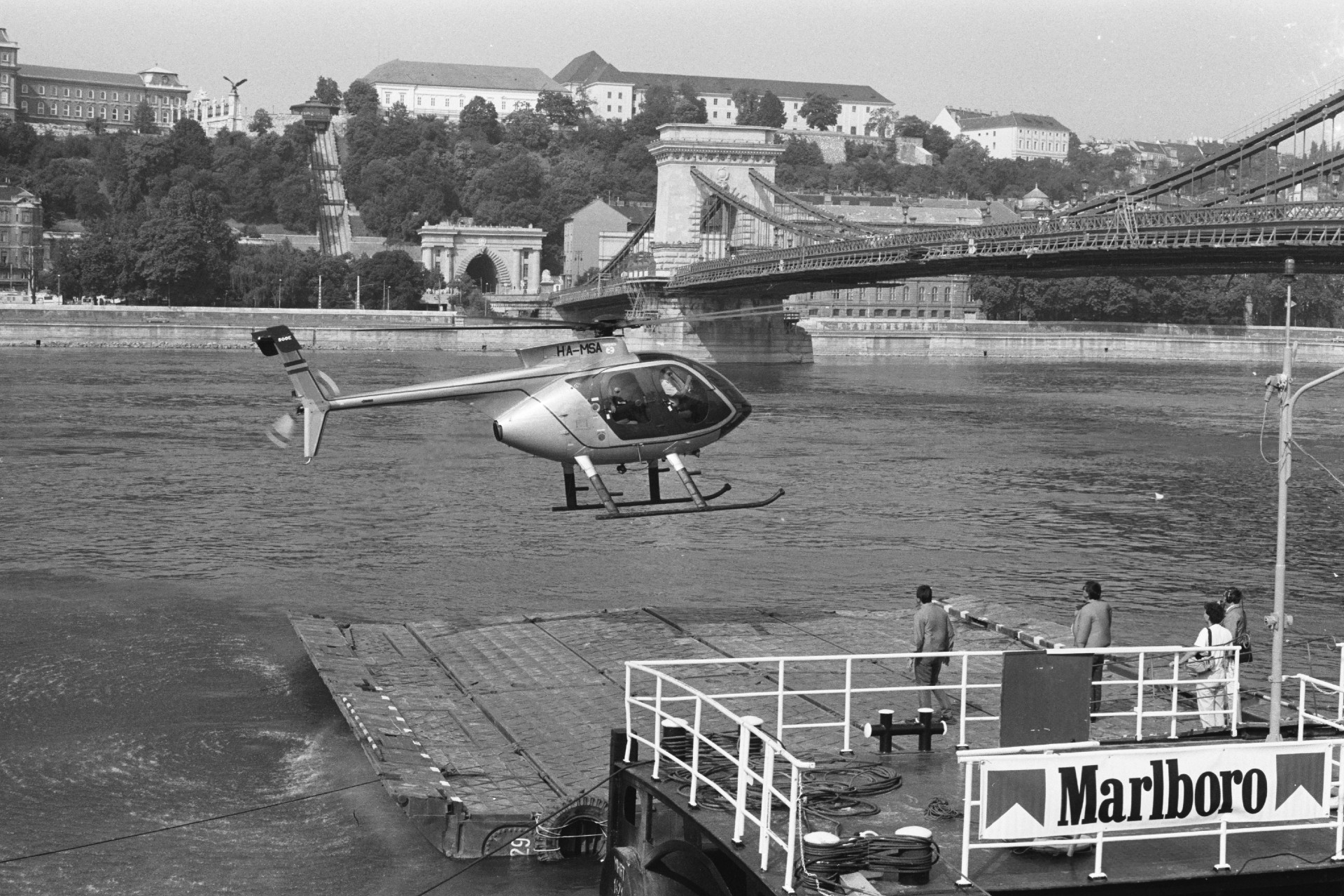
The renovated bridge in 1988 (Photo: Fortepan/No.: 133742)
The coats of arms on the Chain Bridge were replaced in 1973, and the Rákosi coats of arms were replaced by the Kádár coat of arms of the People's Republic. However, as was the case in 1970-1973, it was suggested in 1987 that the original coats of arms be returned to the pylons.
The request was not entirely hopeless, as a year earlier the original coat of arms had been returned to the Szabadság Bridge without any prior notice. As it turned out, the experts exploited a legal loophole there, as the regulations of the monument at the time stated that where there was once a coat of arms, a coat of arms had to be placed there, but it did not specify what it should be like.
However, the Chain Bridge could not take advantage of this because there was already a coat of arms on the bridge. However, the coats of arms on the lampposts were changed. Originally in 1949, at the time of the reconstruction, the 1948 coats of arms were added, which were “supplemented” in 1986, i.e., the Holy Crown and the laurel and oil branches were subsequently mounted on the columns.
The bridge was handed over to traffic in October 1987, but the renovation work continued, it was not completed until the first half of 1988, at a price of 270 million HUF at that time.
Cover photo: The Chain Bridge in 1983 (Photo: Fortepan/No.: 67051)

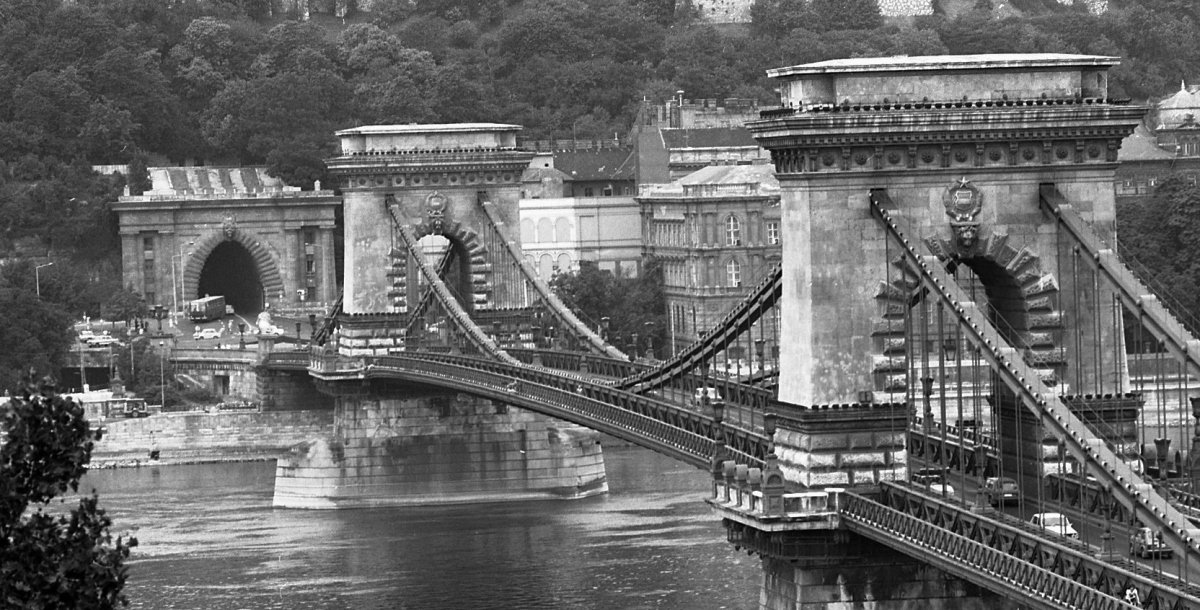

































Hozzászólások
Log in or register to comment!
Login Registration